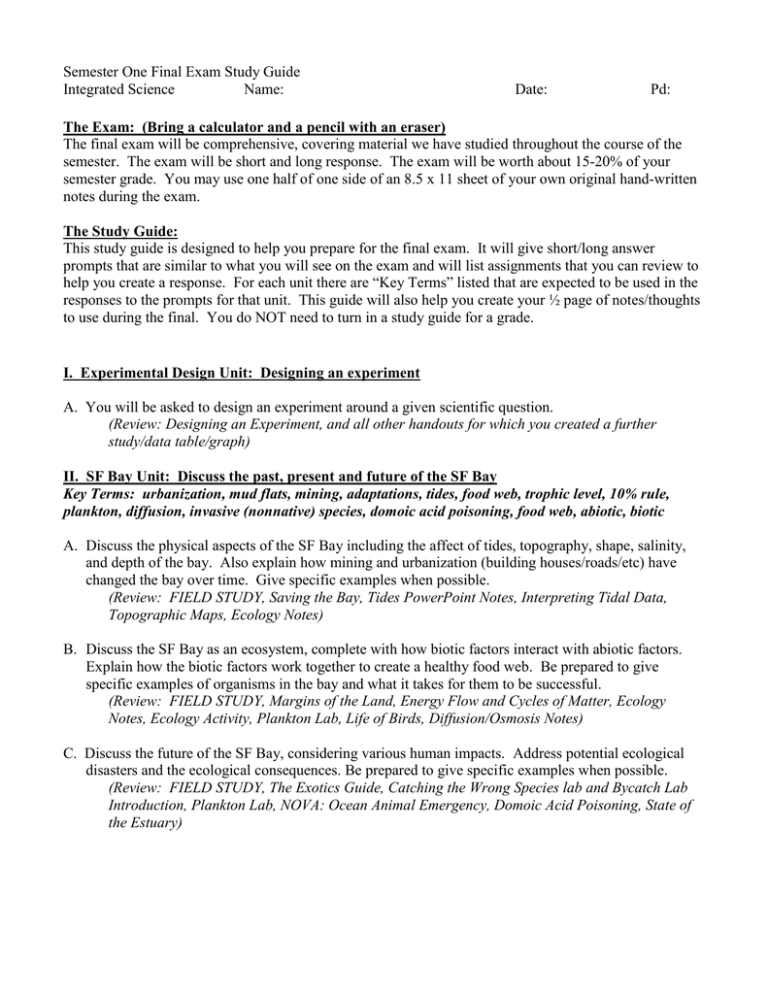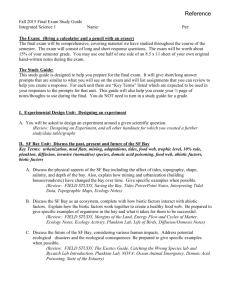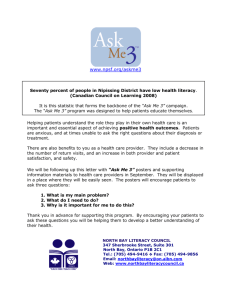Fall Final Study Guide
advertisement

Semester One Final Exam Study Guide Integrated Science Name: Date: Pd: The Exam: (Bring a calculator and a pencil with an eraser) The final exam will be comprehensive, covering material we have studied throughout the course of the semester. The exam will be short and long response. The exam will be worth about 15-20% of your semester grade. You may use one half of one side of an 8.5 x 11 sheet of your own original hand-written notes during the exam. The Study Guide: This study guide is designed to help you prepare for the final exam. It will give short/long answer prompts that are similar to what you will see on the exam and will list assignments that you can review to help you create a response. For each unit there are “Key Terms” listed that are expected to be used in the responses to the prompts for that unit. This guide will also help you create your ½ page of notes/thoughts to use during the final. You do NOT need to turn in a study guide for a grade. I. Experimental Design Unit: Designing an experiment A. You will be asked to design an experiment around a given scientific question. (Review: Designing an Experiment, and all other handouts for which you created a further study/data table/graph) II. SF Bay Unit: Discuss the past, present and future of the SF Bay Key Terms: urbanization, mud flats, mining, adaptations, tides, food web, trophic level, 10% rule, plankton, diffusion, invasive (nonnative) species, domoic acid poisoning, food web, abiotic, biotic A. Discuss the physical aspects of the SF Bay including the affect of tides, topography, shape, salinity, and depth of the bay. Also explain how mining and urbanization (building houses/roads/etc) have changed the bay over time. Give specific examples when possible. (Review: FIELD STUDY, Saving the Bay, Tides PowerPoint Notes, Interpreting Tidal Data, Topographic Maps, Ecology Notes) B. Discuss the SF Bay as an ecosystem, complete with how biotic factors interact with abiotic factors. Explain how the biotic factors work together to create a healthy food web. Be prepared to give specific examples of organisms in the bay and what it takes for them to be successful. (Review: FIELD STUDY, Margins of the Land, Energy Flow and Cycles of Matter, Ecology Notes, Ecology Activity, Plankton Lab, Life of Birds, Diffusion/Osmosis Notes) C. Discuss the future of the SF Bay, considering various human impacts. Address potential ecological disasters and the ecological consequences. Be prepared to give specific examples when possible. (Review: FIELD STUDY, The Exotics Guide, Catching the Wrong Species lab and Bycatch Lab Introduction, Plankton Lab, NOVA: Ocean Animal Emergency, Domoic Acid Poisoning, State of the Estuary) III. Climate Unit: Key Terms: climate, biome, climate control, biosphere, hydrosphere, atmosphere, geosphere, troposphere, ocean acidification, climate change, carbon sink, carbon source, greenhouse effect A. Discuss how biomes and climates are related, focusing on a specific biome of your choice. Make sure you understand which climate controls created the particular climate zone. (Review: Climate Controls PowerPoint Notes, Climate Controls and Biomes Project Notes, Land Biomes and Climatograms, Climate Controls Lab, Where in the World [A Biome Story]) B. Discuss the cycle of carbon through the geosphere, hydrosphere, biosphere, and atmosphere. Be able to include a detailed description of the troposphere. (Review: Layers of the Atmosphere, The Carbon Cycle Notes, Follow the Carbon Atom) C. Explain how climate changes naturally. Next, explain how humans have contributed to climate change, including how climate change has affected our oceans, both physically and chemically. Give specific examples where possible. (Review: Climate Change Reading, Six Degrees Could Change the World, Ocean Acidification Emerges Questions)






